A Rooted Roof: Volunteers install living roof on Commons porch
By Marnie Jackson
Photos courtesy Floyd|Snider
As I approached the Commons building on a recent morning, one thing stood out . . . the vibrancy of the living porch roof, still thick and green even under a coating of fresh snow. The sedum mix has been growing in place on the roof since it was installed during an Autumn 2021 workshop, and seems to be thriving despite this cold snap. Fulfilling its promise to add beauty, mitigate runoff, and support pollinator habitat, the living roof is a great addition to our new gathering space.
Installation of the living roof took place during a daylong October workshop with a volunteer crew from Floyd|Snider, coordinated by Floyd|Snider employee Layni Wachter and Whidbey Institute employee Marta Mulholland and led by architect Matthew Swett and landscape designer Sarah Birger of Taproot Architects, with additional support from board member Tucker Stevens. Tucker has volunteered his time to manage Commons construction on behalf of the Whidbey Institute! We also owe our gratitude to the contractors and suppliers who helped ensure timely delivery and preparation of materials. Well over a dozen people lent a hand, which made the work go swiftly and joyfully.
Floyd|Snider, a Seattle-based multi-disciplinary environmental consulting firm co-founded by our board member Kate Snider, is a frequent partner to the Whidbey Institute on volunteer projects. They provide 40 hours per year, per employee, for free-choice volunteering with a variety of nonprofits, and Layni said the team loves to get together and help on group projects of this nature. “Who doesn’t want to get out and see our coworkers in person for once? It was an awesome opportunity,” she said, “and a lot of our people were able to jump in.”
With pre-assembled containers that fit together, Layni found green roof installation to be fairly simple. “It’s not a complicated installation process,” she shared, “as long as you get instructions on how to assemble the components.” She shared that the Floyd|Snider team members take pride in accuracy, and were therefore quickly able to pick up on subtle yet important parts of the process. “Matthew and Sarah didn’t have to remind us how to orient the packages,” she laughed. “We were determined to do it right.”
With a hardy plant blend selected by Sarah and purchased in pre-assembled trays from Greenfeathers, the roof went on quickly with the bulk of the work being done in just one day. The result is a dynamic carpet of greenery that changes with the seasons and demonstrates that buildings and ecology can be symbiotic.
“Part of the value of the Commons is in education,” Matthew said. “Throughout the project, we’ve tried to make decisions that are worth applying elsewhere.”
In urban areas, Matthew explained, living roofs can do a great deal to mitigate the harm of stormwater runoff. “Living roofs will absorb stormwater events and then let that water off slowly, which is really healthy for the ecology,” he said, “Discharging that water gradually into the surrounding soils is critical to ecosystem health.” Matthew added that replacing the plant community that was in the footprint of the building with a new ecology at roof level helps replace the oxygen production, carbon sequestration, and pollinator habitat that is otherwise lost through building. Additionally, plants help protect the underlying roof membrane from damage due to UV degradation and other wear and tear.
While the Commons living roof is limited to an open porch area, living roofs over enclosed areas can also provide an insulating buffer for extreme heat and extreme cold, reduce vibration, and dampen sound, thereby supporting more comfortable and healthy interior conditions.
“On this particular building, you approach the building from above and see the living roof as you arrive,” Matthew said. “That presented us a unique opportunity.”
As I approach the commons from the vantage point Matthew describes, I see what he means—a multi-hued, living landscape welcoming me to our new gathering space. Thank you, Floyd|Snider and Taproot teams, for bringing this project to life!

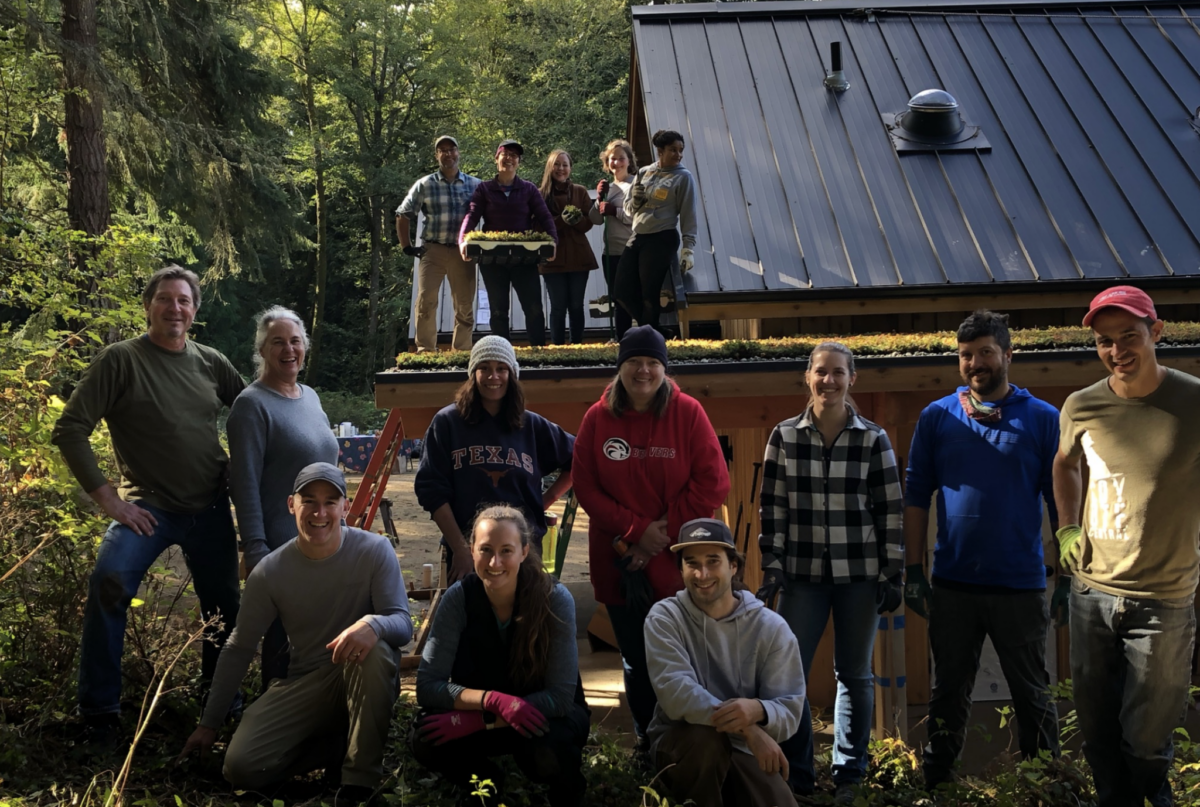
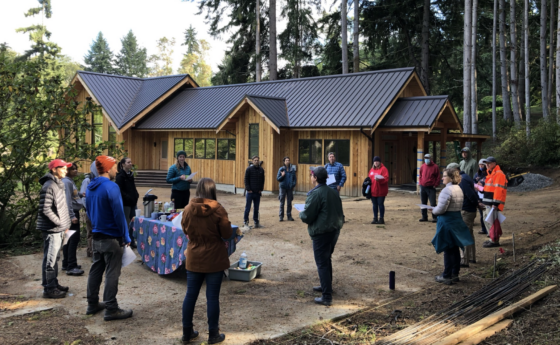
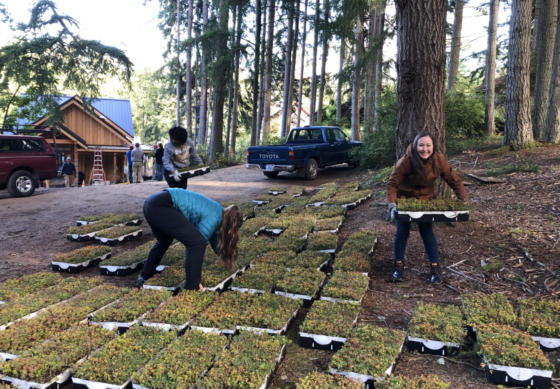
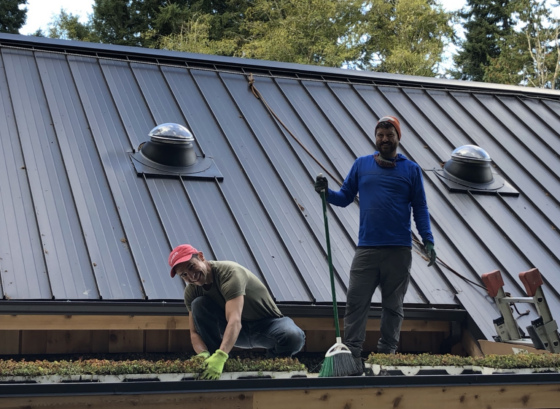
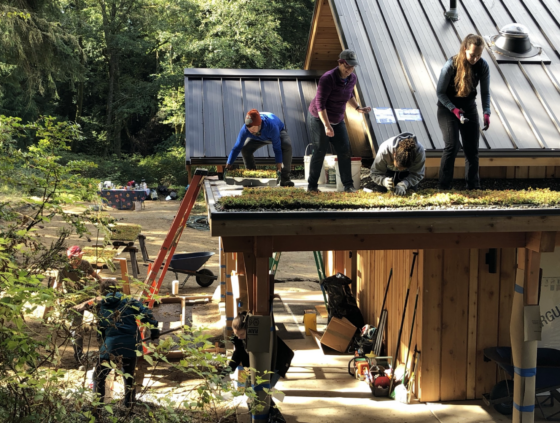
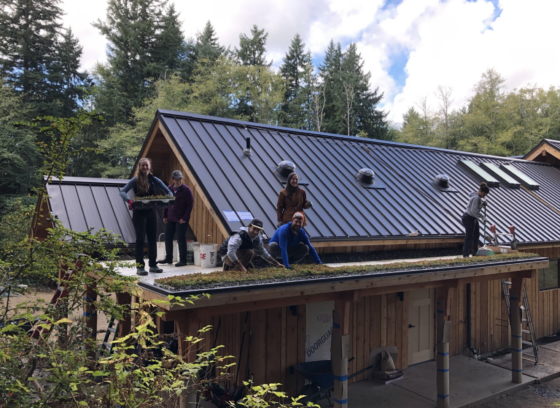
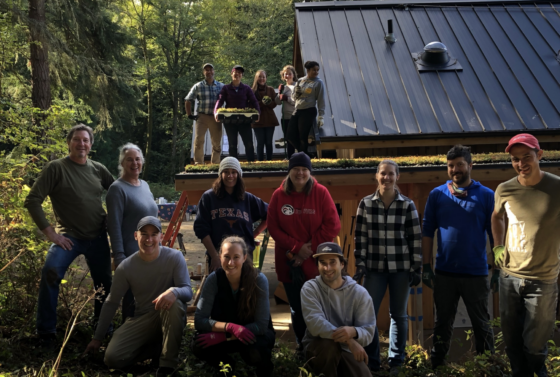
Thanks for the question, Jenifer! Sorry for my delayed response. I checked with Matthew and learned that the roof is engineered to be exceptionally strong. The team utilized 3” of solid wood decking to support the roof, so the weight of leaf litter won’t be a problem.
Question about the rooted roof:
We live on the Quimper peninsula surrounded by woods. During a normal yea the roof is covered by cedar tree detritus, alder leaves and such that washed into the gutters which then have to be cleaned. If this wet, heavy, decomposing organic matter doesn’t get cleaned off a rooted roof, the weight could be a problem. How will you handle that issue?
Jenifer Taylor–Port Townsend